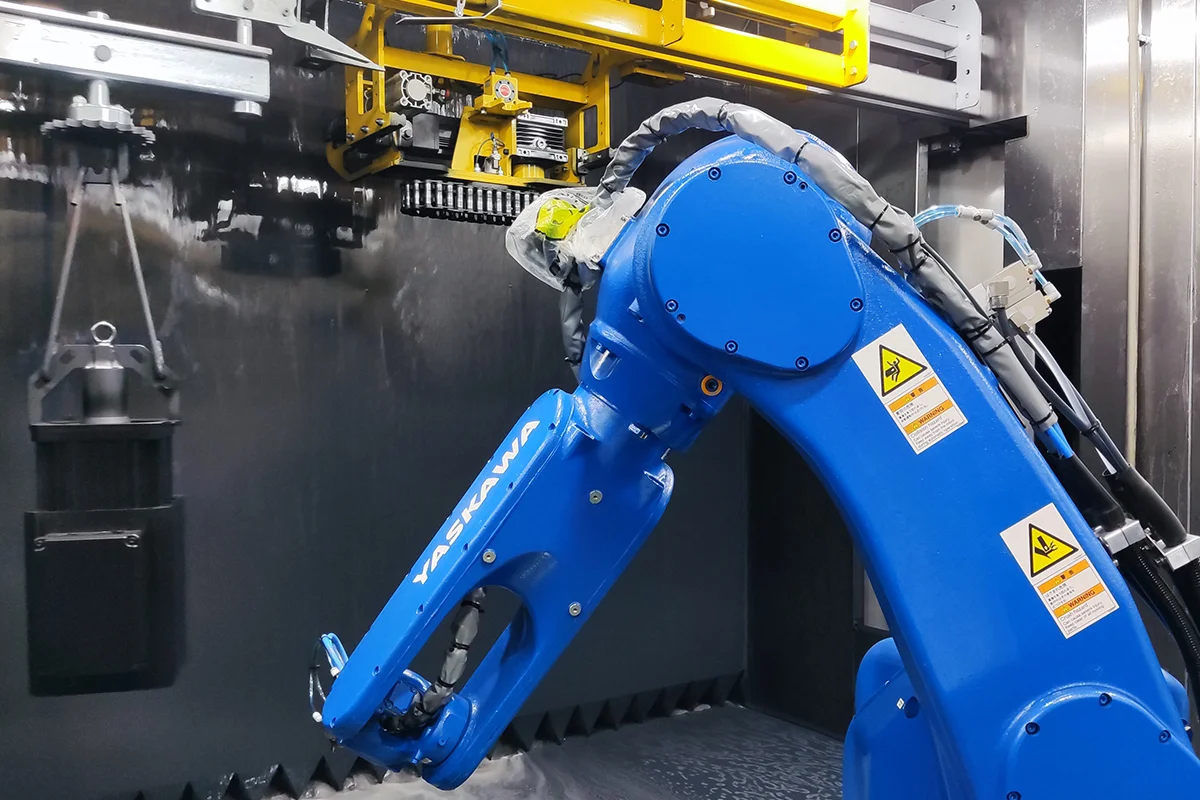Introduction: The Evolution of Surface Finishing
In the era of intelligent manufacturing, precision and efficiency are no longer optional—they are prerequisites for competitiveness. Among the many automated solutions transforming industrial production, the automatic spray painting line stands out as a cornerstone technology for high-quality surface finishing. Designed to replace manual spraying, this system integrates advanced robotics, intelligent control, and environmentally friendly technologies, ensuring durability, aesthetics, and compliance with sustainability standards. In this blog post, as high performance industrial spray painting equipment exporter, Lexuan will share the principle of automatic spray painting line for sale, its process flow, advantages, and applications, etc.
Understanding the Basic Principles of Automatic Spray Painting Line
The primary function of an automatic spray painting line system is to apply coatings consistently across product surfaces. By using robotic arms or programmable spray equipment, coatings are evenly distributed, creating a protective film that offers:
Corrosion resistance against environmental degradation.
Rust prevention for metallic substrates.
Improved aesthetics with uniform color and texture.
Extended lifespan for components subject to harsh conditions.
Unlike traditional manual spraying, the automated process eliminates human error, reduces paint waste, and ensures strict adherence to technical specifications.

Core Process Flow of Fully Automated Spray Painting Line
Conveying System for Continuous Production
The first stage involves a conveying mechanism such as conveyor belts, overhead chains, or AGV (Automated Guided Vehicle) carts. These systems precisely transport components between workstations, maintaining a smooth flow that can support both continuous and intermittent production.
Pre-Treatment and Surface Preparation
Before paint application, surface pre-treatment is essential to ensure adhesion and durability:
Cleaning methods like dry ice blasting, ultrasonic cleaning, or high-pressure water jets remove contaminants, dust, and oil residues.
Chemical surface treatment such as phosphating or passivation enhances coating adhesion, preventing peeling or blistering during service life.
Automated Spraying Unit with Robotic Precision
The heart of the automatic spray painting line machine lies in its robotic spray system:
Multi-axis robotic arms handle complex geometries with electrostatic or air spray guns, ensuring no blind spots remain uncoated.
Closed-loop control systems monitor flow rate, atomization pressure, and environmental conditions in real time, improving paint utilization by 20–30%.
Curing and Drying Systems
Once coatings are applied, curing stabilizes them into durable films:
Infrared drying ovens accelerate primer curing while reducing energy consumption by 15% compared to conventional hot-air drying.
UV curing equipment completes surface hardening for photo-sensitive coatings in as little as three seconds.
Environmental Protection and Emission Control
A modern automatic spray painting line design incorporates sustainability measures:
VOC absorption through activated carbon and regenerative thermal oxidizers (RTOs) ensures compliance with GB16297 emission standards.
Filtration and recycling systems reduce solvent release, protecting both workers and the environment.
Technical Advantages of Automated Spray Painting Line
1. Efficiency and Throughput
The automatic spray painting line for industrial applications achieves single-line capacities of 500–1000 pieces per hour, representing a productivity increase of 3–5 times compared with manual spraying.
2. Consistency and Coating Uniformity
With robotic path accuracy reaching ±0.1 mm, the system eliminates variations in thickness common in manual applications. This consistency ensures flawless finishes across large production batches.
3. Cost Optimization
Paint utilization rates exceed 85%, compared to only 50–60% in manual spraying. This significant improvement results in overall cost reductions of up to 25%, making automated systems financially attractive.
4. Enhanced Safety
Explosion-proof designs and fully enclosed cabins eliminate the risk of fire or gas explosion, creating a safer workplace environment for operators.
5. Environmental Compliance
By drastically reducing VOC emissions and solvent waste, the automatic spray painting line system aligns with international green manufacturing initiatives.
Industry Applications of Automatic Spray Painting Line
Automotive Manufacturing
From bumpers to dashboards, the automotive sector requires coatings that resist scratches, UV exposure, and chemical corrosion. Automated painting lines guarantee both precision and throughput for large-scale vehicle production.
Consumer Electronics
Smartphones, laptops, and appliance casings demand sleek, uniform finishes. The automatic spray painting line for electronics delivers micro-precision, ensuring flawless surfaces free of streaks or uneven layering.
Home Appliances and Furniture
Refrigerators, washing machines, and wooden furniture benefit from smooth, durable coatings that enhance appearance and longevity. Automated systems provide reliable finishes across varied substrates.
Aerospace and Defense
In aerospace, coatings protect against temperature fluctuations, corrosion, and mechanical stress. The automated spray painting line ensures compliance with stringent aviation standards.
Future Trends in Automatic Spray Painting Line Technology
AI-Driven Optimization
Integration of artificial intelligence will enable predictive maintenance, adaptive spray patterns, and reduced downtime.Green Coating Materials
Waterborne and powder coatings are becoming the preferred choice in automated lines, minimizing VOC emissions and supporting eco-friendly production.Smart Factory Integration
With Industry 4.0, the automatic spray painting line equipment can seamlessly connect with ERP and MES systems, enabling full digital traceability.Customization and Flexibility
Next-generation systems will offer modular designs, allowing manufacturers to adjust quickly to changing product specifications and smaller batch sizes.
Conclusion
The automatic spray painting line is more than a piece of industrial equipment—it is a transformative solution that reshapes how manufacturers approach surface finishing. By combining efficiency, precision, cost reduction, and environmental compliance, automated spray painting lines deliver measurable value across multiple industries.
As global competition intensifies and sustainability becomes a priority, investing in an automatic spray painting line system is no longer optional. It is a decisive step toward future-ready, intelligent, and eco-conscious manufacturing.
www.lexuaneqpt.com
Lexuan Intelligent Equipment